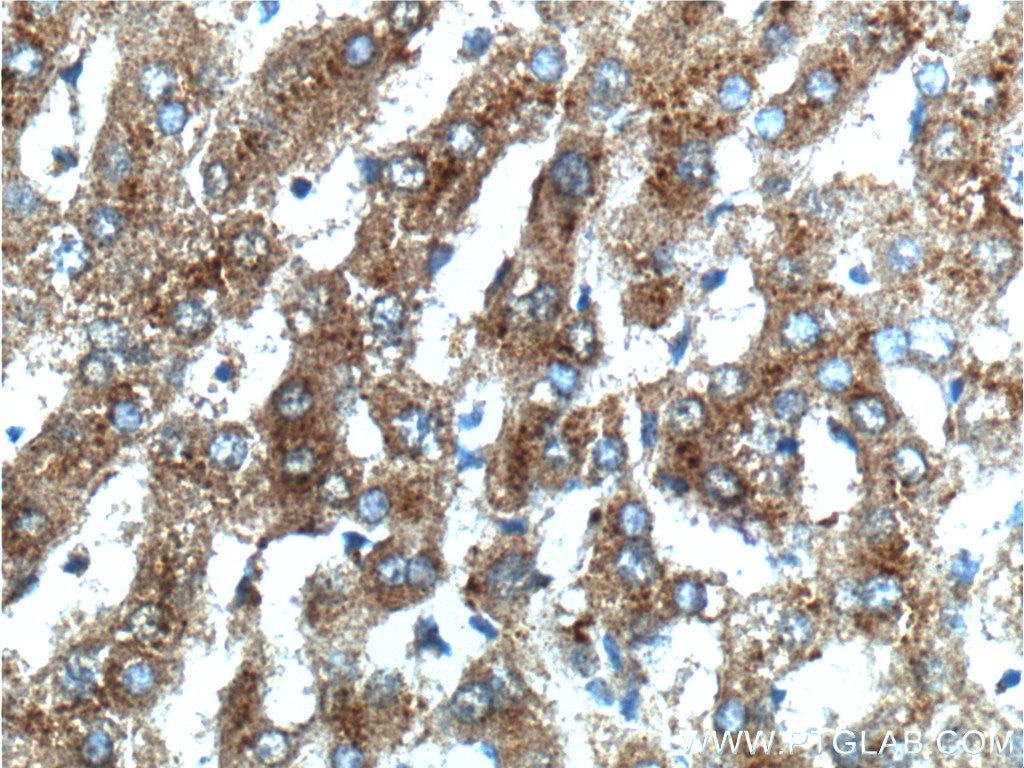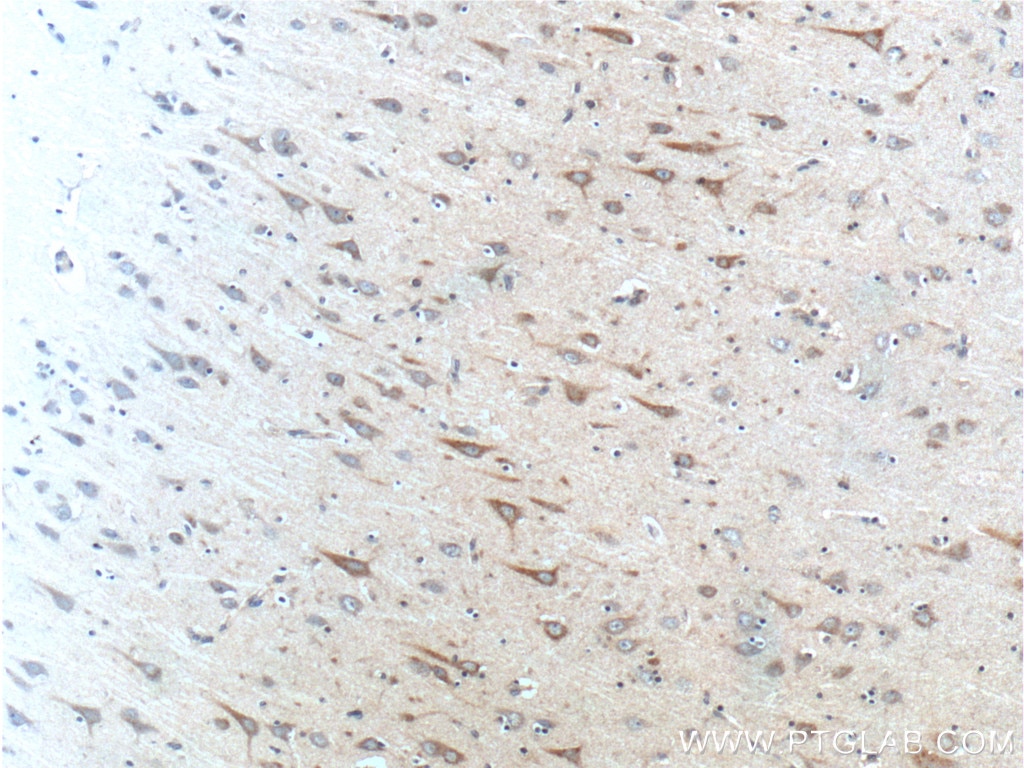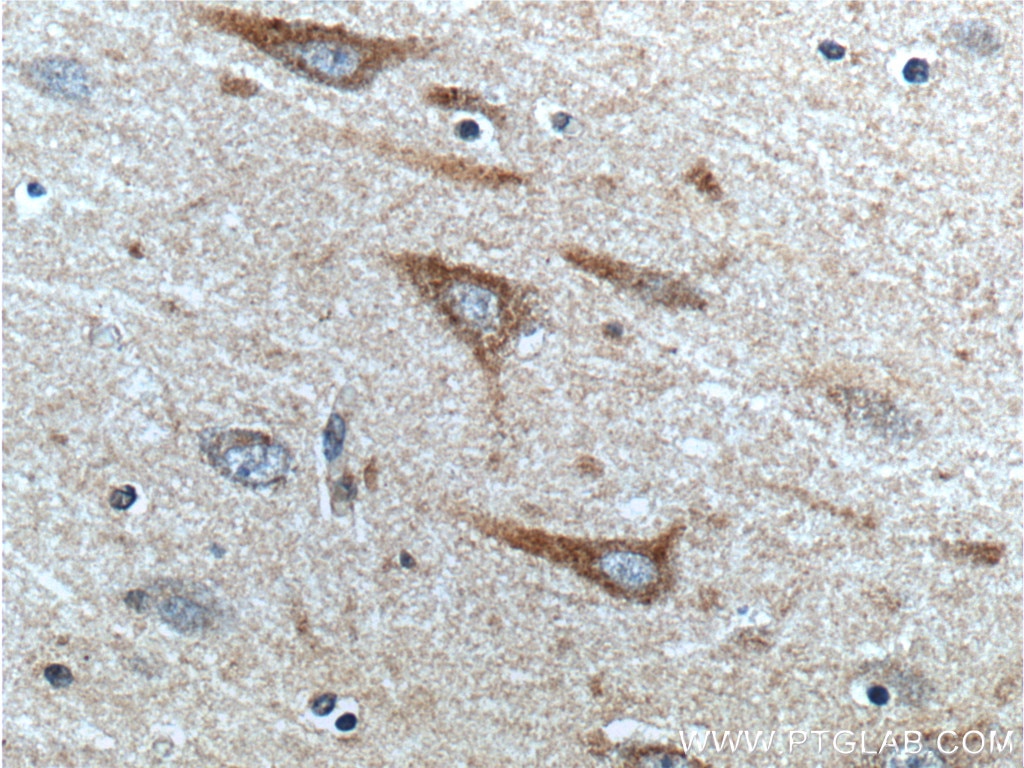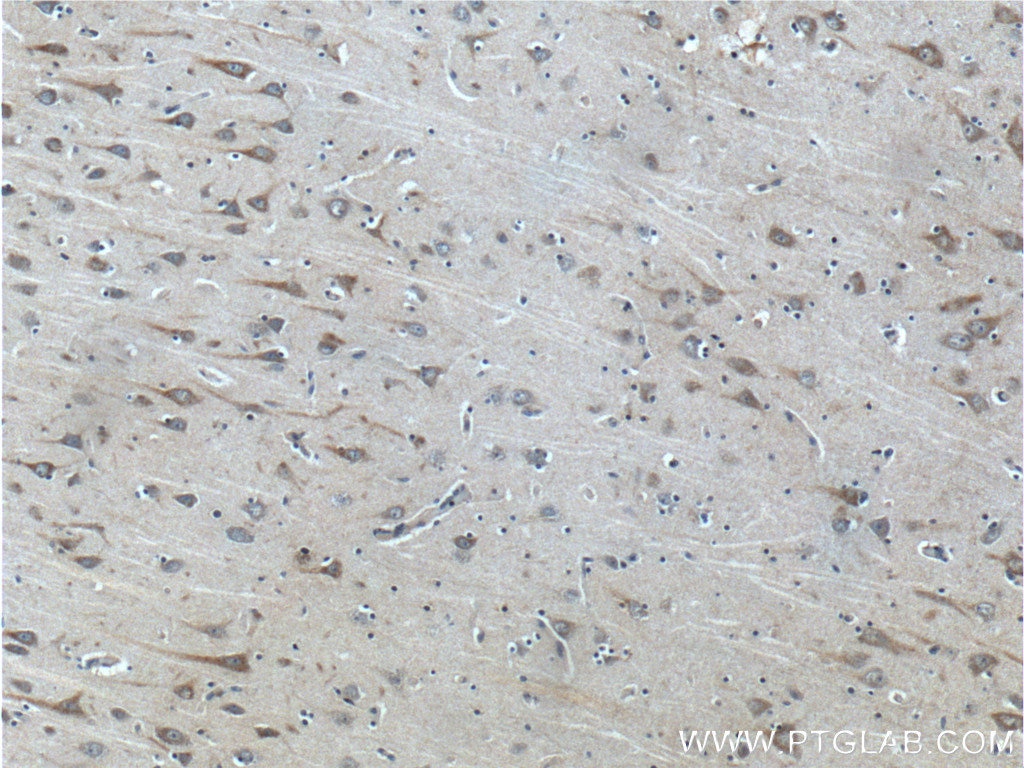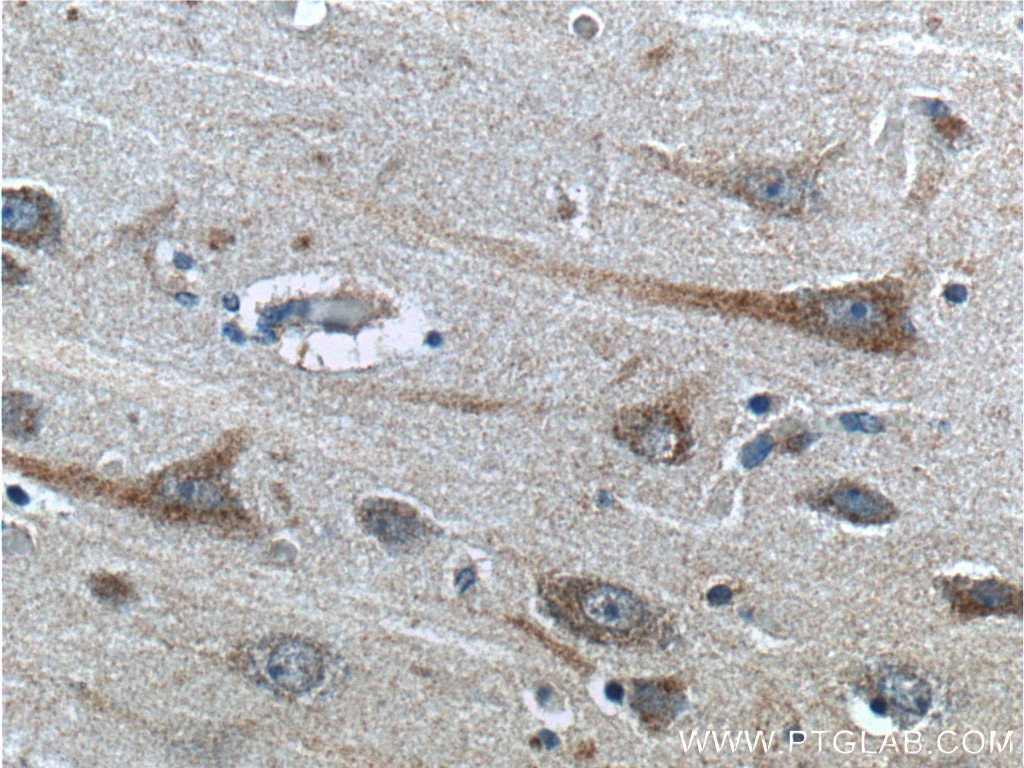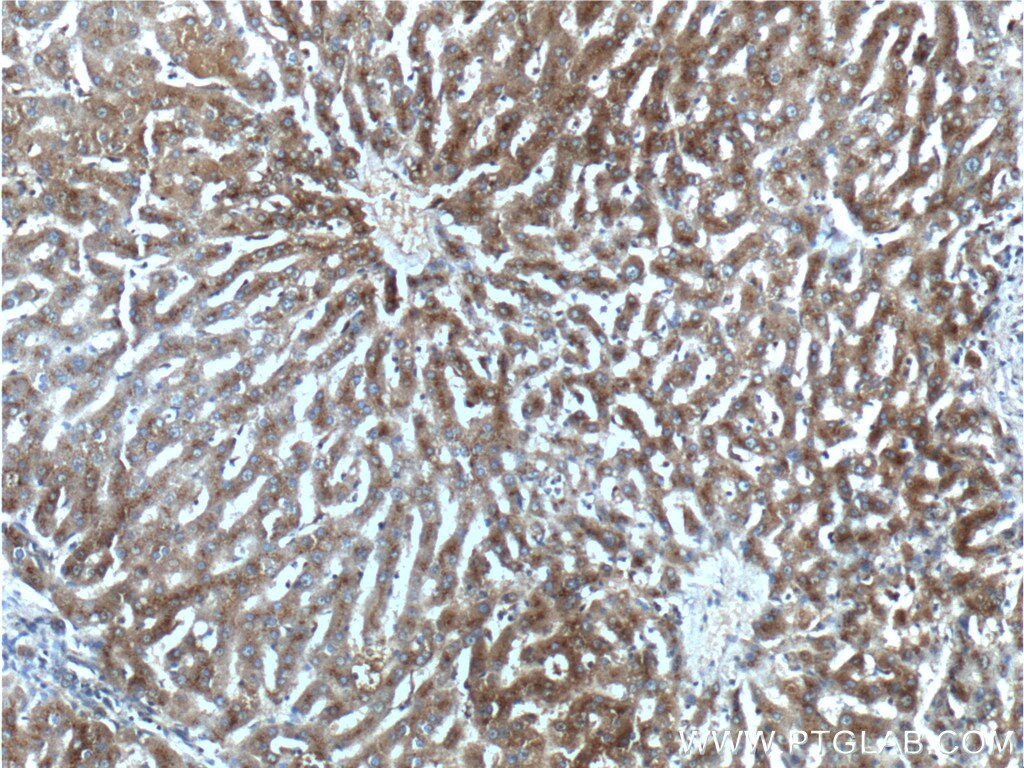- Featured Product
- KD/KO Validated
SCD Polyklonaler Antikörper
SCD Polyklonal Antikörper für IHC, ELISA
Wirt / Isotyp
Kaninchen / IgG
Getestete Reaktivität
human, Ratte und mehr (2)
Anwendung
IHC, IF, ELISA
Konjugation
Unkonjugiert
Kat-Nr. : 23393-1-AP
Synonyme
Geprüfte Anwendungen
| Erfolgreiche Detektion in IHC | humanes Lebergewebe, humanes Hirngewebe Hinweis: Antigendemaskierung mit TE-Puffer pH 9,0 empfohlen. (*) Wahlweise kann die Antigendemaskierung auch mit Citratpuffer pH 6,0 erfolgen. |
Empfohlene Verdünnung
| Anwendung | Verdünnung |
|---|---|
| Immunhistochemie (IHC) | IHC : 1:20-1:200 |
| It is recommended that this reagent should be titrated in each testing system to obtain optimal results. | |
| Sample-dependent, check data in validation data gallery | |
Veröffentlichte Anwendungen
| KD/KO | See 3 publications below |
| IHC | See 11 publications below |
| IF | See 4 publications below |
Produktinformation
23393-1-AP bindet in IHC, IF, ELISA SCD und zeigt Reaktivität mit human, Ratten
| Getestete Reaktivität | human, Ratte |
| In Publikationen genannte Reaktivität | human, Huhn, Maus, Ratte |
| Wirt / Isotyp | Kaninchen / IgG |
| Klonalität | Polyklonal |
| Typ | Antikörper |
| Immunogen | SCD fusion protein Ag13456 |
| Vollständiger Name | stearoyl-CoA desaturase (delta-9-desaturase) |
| Berechnetes Molekulargewicht | 355 aa, 41 kDa |
| Beobachtetes Molekulargewicht | 40 kDa |
| GenBank-Zugangsnummer | BC005807 |
| Gene symbol | SCD |
| Gene ID (NCBI) | 6319 |
| Konjugation | Unkonjugiert |
| Form | Liquid |
| Reinigungsmethode | Antigen-Affinitätsreinigung |
| Lagerungspuffer | PBS with 0.02% sodium azide and 50% glycerol |
| Lagerungsbedingungen | Bei -20°C lagern. Nach dem Versand ein Jahr lang stabil Aliquotieren ist bei -20oC Lagerung nicht notwendig. 20ul Größen enthalten 0,1% BSA. |
Hintergrundinformationen
SCD (stearoyl-CoA desaturase) is a 37-45 kDa (PMID:10946019) microsomal fatty acid monodesaturase, also commonly known as 9-desaturase, which catalyses the committed step in the biosynthesis of mono-unsaturated fatty acids from saturated fatty acids. Five SCD genes (SCD1, SCD2, SCD3,SCD4 and SCD5) have been identified and characterized in mice and SCD1 and SCD2 are the main isoforms expressed in mouse liver and brain respectively, SCD3 is expressed exclusively in skin, whereas SCD4 is expressed predominantly in the heart. SCD1and SCD5 has been the only human SCD gene identified and characterized todate(PMID:15907797 ). The formation of homodimers and oligomers is an intrinsic property of SCD proteins, which may play an important role in regulating the half-life of the SCDenzymes, thus representing a novel regulatory mechanism for SCD enzymes, in addition to the transcriptional and post-translational regulations. A 32-kDa SCD1 degradation product identified may be caused by a major cleavage site at the C-terminus, thus representing a novel degradation product(PMID:15610069).
Protokolle
| PRODUKTSPEZIFISCHE PROTOKOLLE | |
|---|---|
| IHC protocol for SCD antibody 23393-1-AP | Protokoll herunterladenl |
| STANDARD-PROTOKOLLE | |
|---|---|
| Klicken Sie hier, um unsere Standardprotokolle anzuzeigen |
Publikationen
| Species | Application | Title |
|---|---|---|
Nucleic Acids Res EWS-FLI1 regulates and cooperates with core regulatory circuitry in Ewing sarcoma. | ||
EMBO J A stress-induced tyrosine-tRNA depletion response mediates codon-based translational repression and growth suppression. | ||
Stem Cells Increased lipogenesis is critical for self-renewal and growth of breast cancer stem cells: Impact of omega-3 fatty acids.
| ||
Liver Int Disruption of Plin5 degradation by CMA causes lipid homeostasis imbalance in NAFLD. | ||
J Physiol Sex-specific metabolic responses to 6 hours of fasting during the active phase in young mice. | ||
Int J Biol Sci Long noncoding RNA SH3PXD2A-AS1 promotes colorectal cancer progression by regulating p53-mediated gene transcription. |
